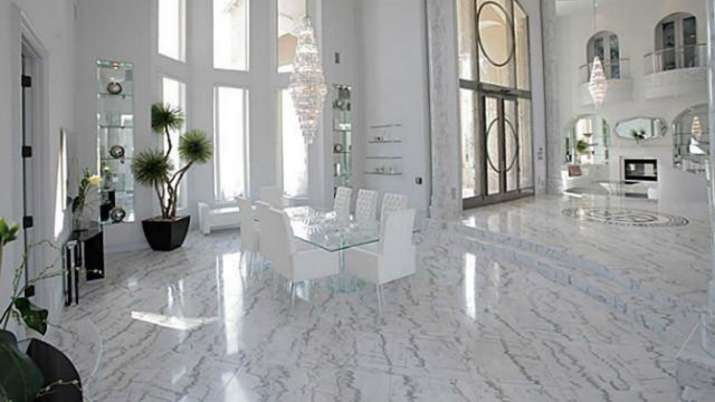“How to install marble flooring in home?” is a common question nowadays. You can purchase expensive marble for your home floor, but it’s valueless if you don’t know the installation process.
I’m a self-declared marble flooring specialist working in this field over the last 10 years. So I know how to do this job with ease. In today’s article, I’m going to write down how you can install marble flooring in your home.
Let’s get started!
5 Steps To Install Marble Flooring In Home
Covering your home floor with marble flooring is very easy. You need some basic tools for this. Such as cement, mortars, marble tiles, measurement tapes, etc. One important thing you’ll have to keep in mind. That is all the floor tiles you choose should be of the same size. For example, it is not ideal to use a 10 cm X 10 cm tiles group with a 60 cm X 60 cm tiles group. You can choose rectangular, square, hexagonal any type of floor tiles
So without talking more, let’s jump into the main discussion. Here are 5 easy steps to install marble tiles on your home floors. The detailed discussion follows in the later parts:
Make The Base Floor Ready:
The first work you need to do is making the floor ready. If you have previous tiles set up, remove them through a chipping hammer, chisel, and brick hammer first. When the floor is empty, make the surface even with a chisel blade and brick hammer. You can do it by following these steps:
- Choose a corner from where you begin the tiles uprooting. Hold your chisel or chipping blade at a 45-degree angle on the edges of tiles. Apply pressure through a machine or brick hammer. Once you remove the very first tile plate, the rest can be removed through the same process.
- If you are installing marble tiles for the first time, you won’t have to follow the first step. Instead, use brick hammers and chisels to create tiny holes over the concrete floor.
Pour The Cement Slur Over Floor Evenly:
Before you start the second step, make sure the concrete floor is clean. Use a broom to wipe any kind of dust particles from the surface. Then follow the next steps:
- A cement mix or cement slur is needed to seal the base floor. To do that, mix cement, sand, and water in an accurate proportion. Pour the slur over the floor using a bucket. Make sure the whole floor is covered by the cement slur properly.
- When you finish pouring the slur mix, it’s time to make the cement layer flat. A trowel is a good option for this work. To begin with, choose one side of the floor. Take the trowel in hand and move it vertically downwards over the cement surface.
- Each time you finish smoothing one line, go for the other line. The trowel will distribute the cement material evenly over the surface. Keep doing the process till the slur surface becomes fully flat in the eyes.
Put Primary Binder Layer OR Mortar Over Slurry Base:
The author of My Kitchen Advice says, “after the cement layer has bonded perfectly, it’s time for the adhesive layer. And the common binder or adhesive in flooring or construction is the mortar.”
A mortar is a pit of sand, cement, lime water, etc. So how to put it over the floor? Here are the steps below :
- The mortar placement is the same as placing the cement slur. You’ll have to keep an eye on the surface. Make sure the layer is flat and all materials have been spread evenly.
- When you finish the layer, leave it for a while. Then the coating has to be applied over it to stick the marble floor tiles. The coating mix ingredients are glue, cement powder, and water. Apply this adhesive coat over your mortar layer.
Choose The Desired Sized Marble Floorings:
In this step, you’ll place the tile plates over the adhesive layer. First, decide the measurement of each plate. Bigger or smaller plates don’t matter. Just make sure the plates are the same size. Keep the following things in mind:
- Cut marble plates with a machine if you need to cover the edges of the floor. For this reason, measure the size of your room floor. Then calculate how many pieces can be placed on each row and column.
- Bigger-sized pieces are a good choice as they are easy to install and these pieces are durable too.
Install Marble Floorings Over The Mortar Layer:
In the final step, place all the pieces of marble floorings over an adhesive layer. And apply pressure from the top. Place tile pieces one by one in a row or column. Then do the following things:
- Make sure there is no space between the joint of two marble tiles. Apply pressure from the top so that the plates are perfectly installed.
- When the flooring is complete, use a flooring grout to seal the edges of marble flooring. This will prevent water from going down and reaching the mortar layer.
Throughout the whole installation process, make sure all three layers over the concrete floor are fully even. And there is no difference in their heights. That’s how you install marble flooring over a concrete floor easily.
Tips For Maintaining The Quality Of Marble Flooring:
As much as beautiful marble floorings are, they tend to lose their beauty because of poor maintenance. So, here are some tips to keep your marble floor long-lasting and new:
- Try not to wipe over the marble floor. This could damage the vein layer of marble tiles. Use blotting technique to pull out stains from the floor.
- Always use pH-neutral cleaners to mop the floor surface.
- Wipe dust out of your floors regularly.
- Make sure the grouts have sealed the edges of the whole flooring surface.
Which Marble Floors Are Most Durable And Ideal For Flooring?
There are two popular types of marble considered as the strongest of all. One is white makrana. Other is katni. Katni has similarities with Italian white marbles. These marbles are very durable and last for many years. They are also porus free and scratch-resistant.
Is Marble Better Than Granite For Flooring?
Marble and Granites both have their strengths and weaknesses. Marbles are expensive, less durable, and need more maintenance. Granites on the other hand are more durable and cheap. But they lack the aesthetic outlook as well as the elegant finish.
What Is The Average Lasting Period Of Marble Floorings?
If your marble flooring is of high quality and properly maintained, it can last decades. Normally marble floors last more than 1 or 2 decades. However, they need annual maintenance, edge sealing, and proper care.
Final Verdict:
Hopefully, you’ve understood how to install marble flooring in home. Whenever you start the process, make sure all the related things are available to you. A few common tools are necessary to complete this job.
Read this article again and common if you have any questions.











